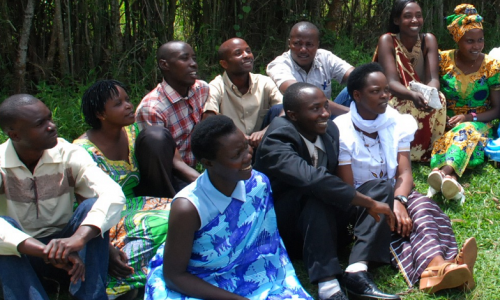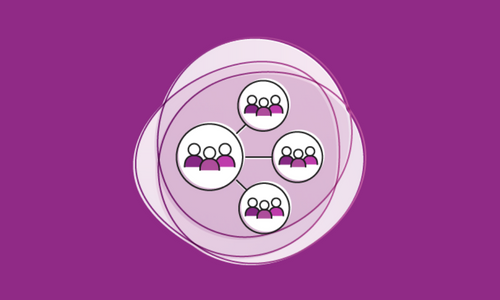What is a norms-shifting intervention? And why does that matter for its scale up?

The Learning Collaborative to Advance Normative Change is a network of experts committed to facilitating collaboration between organizations and individuals working on adolescent and youth reproductive health (AYRH) norms-shifting interventions. Members are working collectively to build knowledge and tools to promote and guide effective social norm theory, measurement, and practice.
Previously we talked about what social norms are and why they matter. Here we talk about issues related to the design of norms-shifting interventions and specifically, why that matters for later efforts to scale up the intervention. To answer these questions, LC members recently undertook an analysis of over 30 program articles, evaluations, and meta-reviews of interventions employing norms-shifting elements and community-based activities – from the fields of sexual and reproductive health, gender, and gender-based violence (GBV).
The report and related brief from this analysis show that successful norms-shifting interventions, including those designed to promote AYRH and well-being, have one or more of the following key attributes:
- SEEK COMMUNITY-LEVEL CHANGE: Shift social expectations, not just individual attitudes and behaviors and clearly articulates social change outcomes at the community-level.
- ENGAGE PEOPLE AT MULTIPLE LEVELS: Use multiple strategies to engage people at the individual, family, community, and policy/legal levels.
- CORRECT MISPERCEPTIONS AROUND HARMFUL BEHAVIORS: Sometimes individuals engage in a harmful behavior because they mistakenly think these behaviors are more common than they are. In such instances, correcting misperceptions by revealing the actual, healthier norm can be effective. For example, if binge drinking is driven by an incorrect belief that “everyone does it,” when in reality they don’t, a norms-shifting approach might reveal that most youth do not drink, and those that drink do so in moderation.
- ROOT THE ISSUE WITHIN A COMMUNITY’S OWN VALUE SYSTEMS: Identify how a norm serves or contradicts a community’s own values, rather than labeling a practice within a given community as bad.
- ACCURATELY ASSESS NORMS: Identify which norms shape a given behavior and which groups uphold the norm. Social norms exist within reference groups – the people who are important to an individual when they are making a decision. Engaging the proper reference group is critical for effectively changing a social norm. For example, if parents and religious are critical reference groups for decisions about family planning methods, programs need to engage these groups in addition to young people.
- CREATE SAFE SPACES FOR CRITICAL REFLECTION BY COMMUNITY MEMBERS: Deliberately promote critical, sustained reflection that goes beyond trainings, one-off campaigns or ad hoc outreach. Critical reflection is often done in small group settings. Programs that create safe spaces that encourage regular reflection on why and in what contexts GBV occurs can move beyond facts about GBV occurrence and can help people reflect on social realities and new possibilities going forward.
- CONFRONT POWER IMBALANCES, PARTICULARLY RELATED TO GENDER AND OTHER SOURCES OF MARGINALIZATION: Within sexual and reproductive health and programs focused on adolescent and youth development, this is usually an important attribute of norms-shifting programming. Young people seeking family planning services may face power imbalances with disapproving service providers or parents.
- USE “ORGANIZED DIFFUSION”: Start with critical re flection to change norms within a core group first. This group can then engage others to have community-level impact. This is a technique to generate and diffuse social norms that has successfully been used by Raising Voices and others with SASA!, an approach to reduce HIV and violence against women, including alcohol-driven violence.
- CREATE POSITIVE NEW NORMS: Create new, shared beliefs when harmful norms have strong support within groups. While it is common to focus on negative consequences of a behavior, this can unintentionally reinforce that behavior by making it seem widespread.
Why are these specific attributes so important for scale up?
Persistent behaviors that are harmful to adolescent health and well-being have underlying change mechanisms. The attributes are strategies to address these change mechanisms. When a norms-shifting intervention that was successful in one location or population is scaled-up to a new location or population, the norms change mechanisms need to remain intact. If they are modified or dropped, the effect of the intervention may not be the same and development of a more enabling normative environment may not be achieved.
To learn more, check out the following resources and stay tuned for our next blog:
Conceptualizing how social norms and other factors intersect to influence behavior and power.
- Background Paper: Identifying and Describing Approaches and Attributes of Normative Change Interventions
- Brief: Community-Based Norms Focused Interventions: Definition and Attributes
For over one decade, Susan Igras, Senior Technical Advisor at Georgetown University’s Institute for Reproductive Health and co-facilitator of the Learning Collaborative’s Scale Up Community, has worked at the nexus of scale up and social change, providing design and evaluation/research support to community-based programs aiming to address at scale gender and other social determinants of adult and adolescent sexual and reproductive health and well-being.
If you are not yet part of the Learning Collaborative and would like to join, please sign up here!
 Where We Work
Where We Work  Press Room
Press Room  FACT Project
FACT Project  Passages Project
Passages Project  Learning Collaborative
Learning Collaborative  Search All Resources
Search All Resources  Social Norms
Social Norms  Fertility Awareness Methods
Fertility Awareness Methods